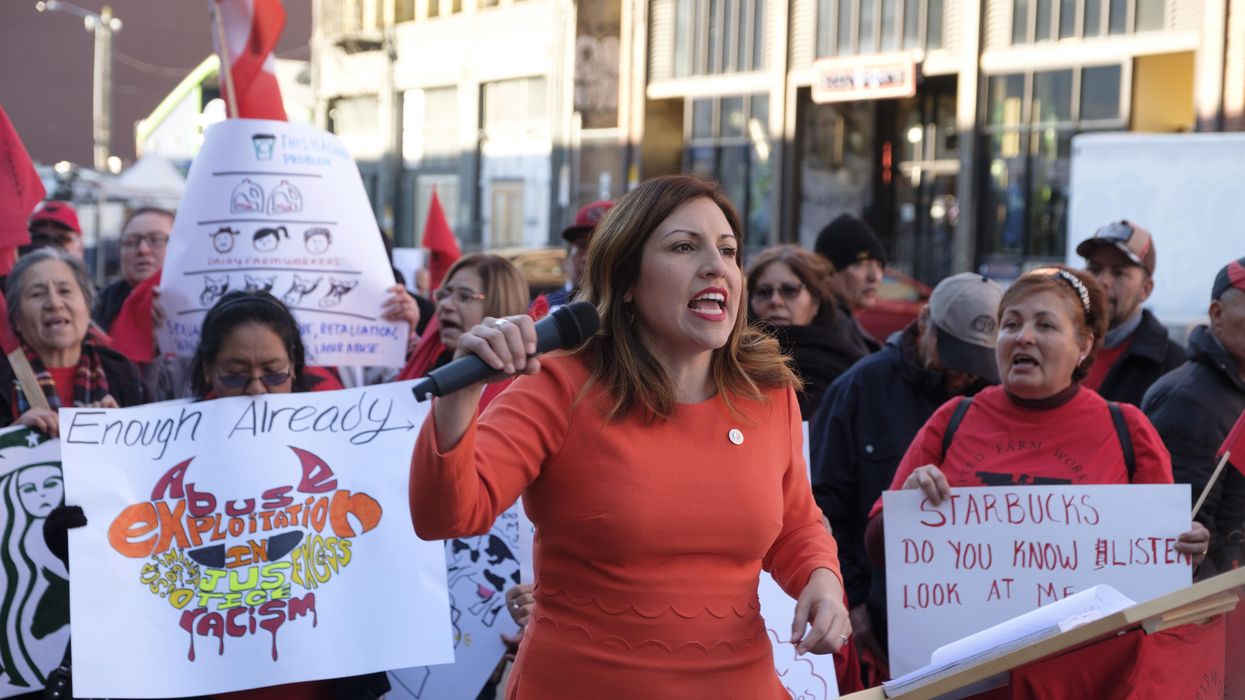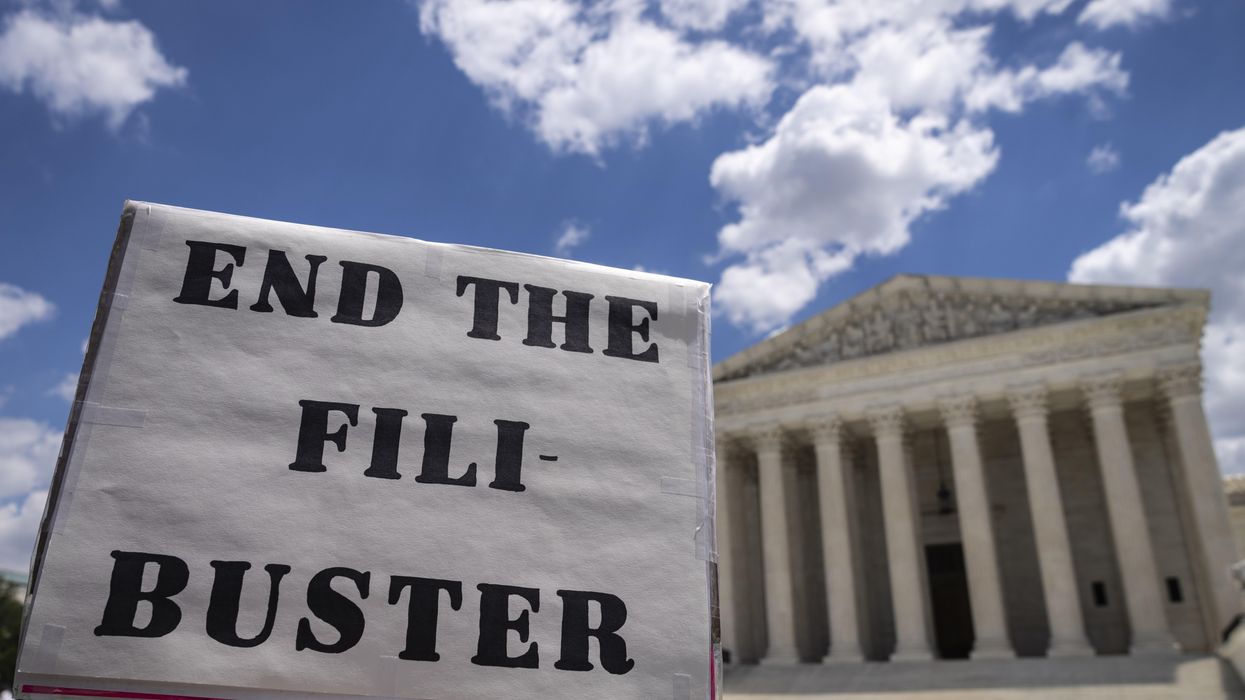Perez is co-director of Democracy Rising.
For almost 250 years, white men have led the design, implementation and reform of American democracy, and, frankly, it is not working well for many of us. Women represent a slight majority of the U.S. population, and, according to the Brookings Institution, people of color will constitute a majority of the population by 2045. Isn’t it time for people of color, and particularly women of color, to take the lead in re-imagining what a truly multiracial and multicultural democracy can look like?
In 2020, I co-founded Democracy Rising. We support impacted communities who are working to transform democracy at a local level. I’ve seen firsthand how transformative it is when women of color lead reform. We can do democracy differently, and, when we do, we can reshape who participates in the political process, who runs for office and ultimately who wins elections, which in turn can lead to policies that better serve our communities.
Why focus on the local level? Because smaller communities are better positioned to experiment around reforms and initiatives, and are able to course correct more nimbly than at the state or federal level. Effective democratic reform is happening at the local level; it is where the hands-on work of re-imagining democracy is being done, and it is largely getting done by women – particularly women of color.
Let’s consider Seattle. In 2015, voters approved a ballot initiative to adopt the Democracy Voucher Program. The program stipulates that all of the city’s registered voters are mailed four $25 dollar vouchers that they can use to donate to the local candidates of their choice. Furthermore, the program is also available to all non-registered eligible voters and legal residents, despite their ineligibility to vote. The goal of the program is to amplify the political influence of communities that were historically left out of the electoral process because they didn’t have money to contribute to campaigns.
The program was first implemented in 2017. That year, Teresa Mosqueda decided to run for City Council. As a 37-year-old woman of color who rented her home, she was one of many non-traditional candidates who ran that year. “I had been asked to run before, and I had always said no,” Mosqueda says. “But this was the first year that democracy vouchers were going to be available for candidates. What this meant to me was that I didn’t need to have deep pockets to run a campaign. The program was my ticket to run a people-powered campaign.”
Leveraging her background working for the Washington labor council, Mosqueda was able to not only fund her campaign using the program, but also to use it as an organizing tool.
“When I was knocking doors that year, so many people told me that no candidate had ever come to talk to them, and they would literally tell me to wait a moment while they went into their kitchen to get their democracy voucher to give to me,” Mosqueda says. “It was amazing to see them realize the power the vouchers gave them.”
The vouchers demonstrated to disenfranchised voters and non-voters that their actions mattered; they could use their vouchers to fund campaigns for candidates that shared their values and represented their communities.
Of the eight candidates running for the open at-large council seat in 2017, seven were women, people of color, young people, members of the LGBTQ community or a combination of those identities. Seattle had never seen a race as diverse; the reform had transformed the election. Candidate diversity has increased in each election cycle since.
“Since 2017, we’ve seen a three-fold increase in the number of people who contribute to local candidates,” Mosqueda says. “In 2015, the number was around 3,000 people. By the last election cycle, that number was up to almost 49,000 people. These contributions came from a diverse group of voters, and non-voters, including legal residents who are not eligible to vote, but are able to participate in the program and make their voices heard in this way.”
Mosqueda won her seat in 2017, and joined a Seattle City Council that had, for the first time, a supermajority of women. At the time, she was also the only renter on the council. Mosqueda and her colleagues have passed the largest progressive revenue legislation in Seattle’s history. As well, they passed the first city-level domestic worker’s bill of rights and a robust essential worker policy package that kept people employed and protected during the pandemic.
“It was women and women of color in the council who have been at the front lines of transforming how we invest in policing and public safety in our city,” Mosqueda says. “We moved about 17 percent of that budget to other areas, including a new department of community safety, and invested millions into mental health services and violence reduction strategies.”
Seattle is an example of how democratic reform that increases access to diverse participation and leadership results in better policy.
Another example of how democracy reforms can profoundly transform a community is the case of New York City. Prior to the implementation of ranked-choice voting in New York in 2021, 52 percent of the city’s population and 60 percent of voters were women, yet women had never held a majority on the City Council. Indeed, in 2021, before the implementation of RCV paired with other reforms including term limits and a robust public financing matching system, women held only 28 percent of the council seats. Now, women hold 61 percent of City Council seats, and younger women of color hold a majority of them.
Democratic reforms such as these remove systemic barriers that have made it difficult for women, and especially women of color, to run for office and win. They increase the number of people who have a say in the political process. Communities across the United States are adopting effective reforms like ranked-choice voting, participatory budgeting and voting rights for 16-year-olds. When these reforms are passed and implemented, women and people of color are empowered to take on leadership roles and we have seen their communities benefit.
The time has come for women and women of color to take the lead in re-imagining a truly inclusive democracy. Many women I’ve met are showing us how to do it in their own communities, and we would be wise to learn from them.
Democracy Rising and Represent Women are partnering to convene the inaugural Women of Color Democracy Transformation Summit in the spring of 2023.



















